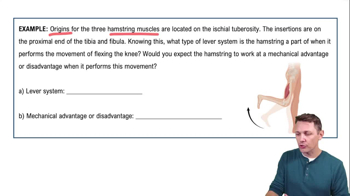Multiple Choice
When the diaphragm contracts, __________.
1720
views
1
comments
 Verified step by step guidance
Verified step by step guidance Verified video answer for a similar problem:
Verified video answer for a similar problem:



 5:39m
5:39mMaster Origin and Insertion with a bite sized video explanation from Bruce Bryan
Start learning